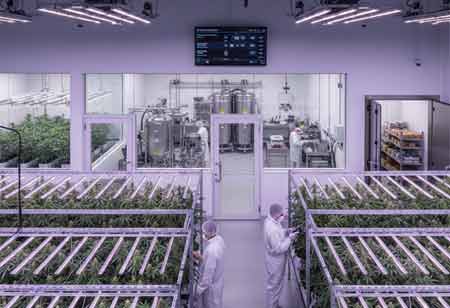Thank you for Subscribing to Cannabis Business Insights Weekly Brief
Unlocking Potential: Extraction Methods in Cannabis Industry
Cannabis extraction technologies are fast advancing to meet the surge in demand, consistency, safety, and quality concerning product quality, consumer safety, and sustainability.

By
Cannabis Business Insights | Monday, August 18, 2025
Stay ahead of the industry with exclusive feature stories on the top companies, expert insights and the latest news delivered straight to your inbox. Subscribe today.
Fremont, CA: The cannabis industry has experienced growth lately, leading to an increased demand for cannabis-derived products in both the medicinal and recreational sectors. As this market continues to expand, the necessity for effective and dependable extraction technologies has become more vital. Cannabis extraction involves the process of isolating desirable compounds, mainly cannabinoids like THC and CBD, from the cannabis plant. Numerous extraction technologies meet the rising demand and ensure high product quality, each with benefits and challenges.
Solvent-based cannabis extraction involves using solvents such as ethanol, butane, or propane to dissolve cannabinoids and terpenes in cannabis plants. This is a favorite method because ethanol extraction is quite efficient and scalable. Despite this, residual solvents and contamination issues made the industry seek safer, more environmentally friendly alternatives. This is suitable for use on a small and industrial scale.
Butane hash oil, or BHO, is one of the most popular extraction methods for making concentrated cannabis extracts such as wax, shatter, and live resin. It involves using butane as a solvent to extract cannabinoids and terpenes from plant material, yielding highly concentrated products with intense effects. However, it is a dangerous process since it involves flammable solvents.
CO2 extraction is a safe and efficient method of extracting cannabinoids and terpenes from cannabis plants. It uses carbon dioxide in a supercritical state, allowing for precise temperature and pressure control. This method is ideal for high-quality, medical-grade cannabis products, but its high initial costs and slower process may be a barrier for smaller producers. The process is typically clean and without residual solvents.
There has been a rise in solventless extraction methods such as rosin pressing and dry-sifting, which are easy and safe. Ro-sin pressing uses heat and pressure to extract oils from cannabis flowers or hashes, resulting in an entirely solvent-free concentrate with the plant's natural flavor and aroma. Dry sifting separates resin-producing glands from plant material, producing kief, clean, high-quality extract. These methods are a more natural alternative to solvent-based methods, making them preferred by consumers who want only organic and solvent-free products.
Advances in cannabis extraction are focused on nanotechnology to improve the bioavailability and potency of extracts. By breaking down cannabinoids into nanoparticles, companies can create products with faster onset times and more potent effects. This is particularly promising for edible cannabis products, which often face slow onset times.
The cannabis industry focuses on sustainability and environmental impact, with companies exploring green extraction methods to reduce energy consumption and waste while maintaining high product quality. This aligns with broader trends in agriculture and manufacturing, as consumers and regulators prioritize eco-friendly practices.
Therefore, the evolution of cannabis extraction technologies is essential to sustain the growing demand for products that are based on cannabis but with consistency, safety, and quality. This technology provides producers with better alternatives for consumers who want potent concentrates, clean oils, or eco-friendly products. It also promotes improved product quality, consumer safety, and sustainability, guaranteeing responsible market growth.






